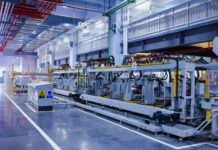
Employee engagement is essential for a thriving workplace. When employees are engaged, they are more productive, satisfied, and motivated, which leads to lower turnover and better company performance. One of the most effective ways to boost employee engagement is through better workplace management. By optimizing various aspects of the workplace, from the physical environment to the tools employees use daily, businesses can create an atmosphere that fosters engagement.
From comfort to collaboration: Shaping workspaces that support productivity
A well-designed workplace can significantly impact employee engagement. From open spaces that encourage communication to private areas that allow for focused work, the layout of the office plays a crucial role in how employees feel about their work environment. It’s important for managers and HR teams to assess how space is utilized and ensure that it supports both collaborative efforts and individual productivity. For example, providing areas for team meetings, brainstorming sessions, or quiet time can help employees feel more comfortable and energized throughout their workday.
Additionally, investing in ergonomic furniture and providing modern, comfortable workstations can improve employees’ physical well-being. When employees feel physically comfortable, they are more likely to remain focused, reduce stress levels, and maintain high levels of engagement. Implementing workplace management solutions can further enhance the work environment by optimizing space utilization, streamlining resources, and ensuring employee well-being.
Harnessing tech for smoother workflow and efficiency
Technology plays a crucial role in workplace management, and when employees have access to the right tools, they can perform their tasks more efficiently, which contributes to engagement. Implementing systems like meeting room booking software, project management tools, and internal communication platforms can reduce frustration and time wasted on administrative tasks. A streamlined, tech-savvy environment encourages employees to spend more time focusing on their work rather than navigating logistical issues.
Moreover, providing training and development opportunities on the latest technologies allows employees to feel more confident in their roles, empowering them to take ownership of their work. This sense of autonomy can increase engagement and job satisfaction.
Fostering a culture of feedback and recognition
Creating a culture of feedback and recognition is a powerful way to improve employee engagement. When employees feel that their contributions are valued, they are more likely to stay motivated and committed to their work. Managers should make it a priority to offer constructive feedback and praise regularly. This can be achieved through:
- Regular one-on-one meetings with managers
- Performance reviews
- Peer-to-peer recognition programs
- Public acknowledgment of achievements during team meetings
Moreover, providing avenues for employees to share their feedback and concerns allows managers to address potential issues before they affect engagement. Workplace management tools, like employee surveys and performance tracking systems, can be valuable in this regard, providing insights into employee sentiment and allowing for timely intervention when needed.
Encouraging flexibility and work-life balance
Employee engagement is deeply tied to work-life balance. When employees feel that they have the flexibility to manage both their personal and professional lives, they are more likely to remain motivated and engaged in their work. Offering flexible working hours, remote work options, and providing a variety of spaces for different work needs can significantly contribute to a more engaged workforce.
Workplace management should include initiatives that prioritize employee well-being. Some actions that can improve employee work-life balance include:
- Offering wellness programs
- Providing mental health support resources
- Flexible leave policies
- Encouraging time-off for personal matters
These actions show employees that the company cares about their overall health and happiness. When employees feel supported in all areas of their lives, their engagement at work is likely to increase.
Cultivating trust and transparency for better leadership outcomes
A crucial factor in employee engagement is trust. Employees need to feel that their leadership is transparent and supportive. When there is a strong relationship between employees and management, employees are more likely to feel valued and engaged in their work. Workplace management plays a key role in facilitating open communication and promoting transparency.
Leaders should be transparent about company goals, strategies, and challenges, and encourage open dialogue with employees. Additionally, involving employees in decision-making processes and fostering an inclusive environment where every voice is heard can enhance engagement and build trust across the organization.
Conclusion
Improving employee engagement through better workplace management is not just about making employees more productive—it’s about creating an environment where they feel valued, supported, and motivated. From optimizing the physical workspace to embracing technology and promoting work-life balance, workplace management has a direct impact on how engaged employees feel. By focusing on these key strategies, organizations can create a positive work environment that drives employee satisfaction, performance, and retention.





